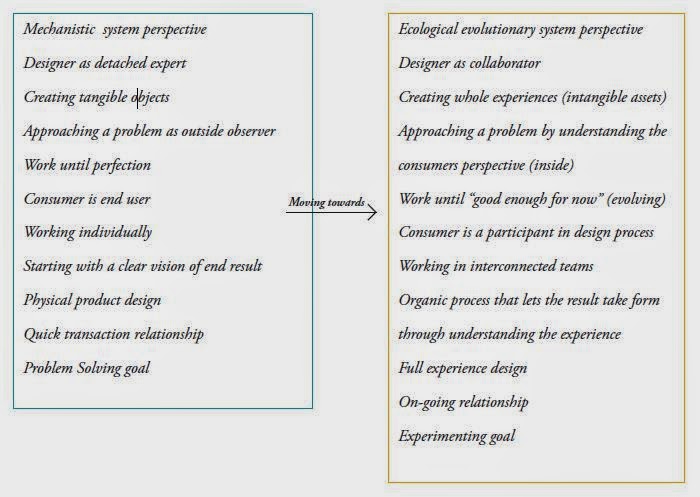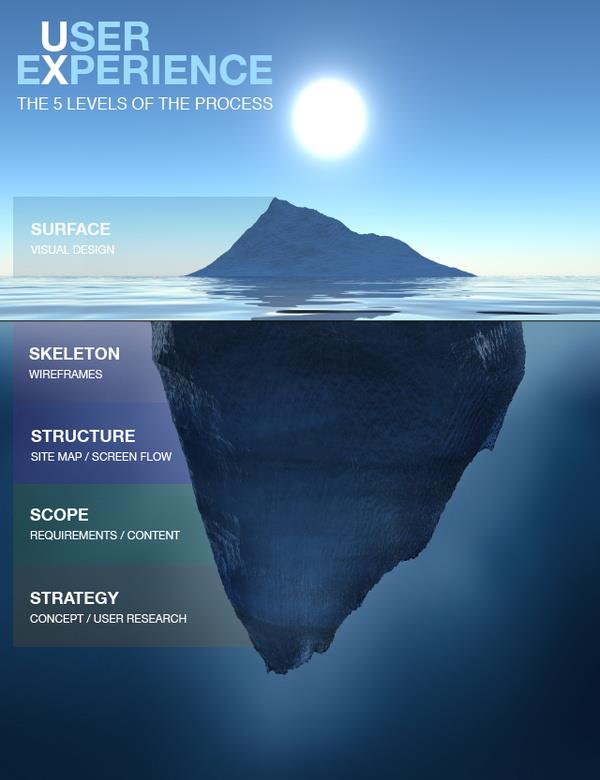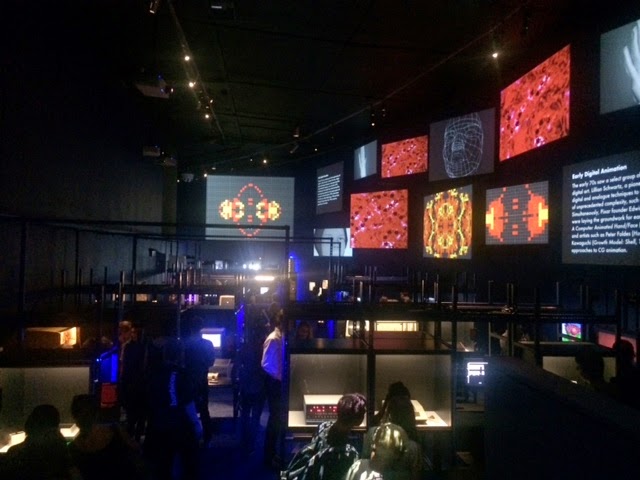
I recently read the paper Design in the Age of Biology, by Hugh Dubberly. I created a diagram of the main themes running throughout the paper: What is Old(Left) is moving towards New (Right):
In this paper, Hugh Dubberly talks about how the process of design has evolved throughout the past decades. He states that designers are responding more to human factors and the conditions in which we live, which is ultimately changing the way we think of design. He places design practice on a metaphorical spectrum that moves from a mechanical system to an organic, biological system.
As we move from the Industrial era into the Information age, designers have to change the way they work in order to accommodate technological advances. Using electronics and media as both a tool to design as well as to publish our work is changing the way people think about design and its potential. The article brings together a series of models from a variety of different critics illustrating how design is evolving from being a clockworks system to ecology.
The rise of service design is also addressed in this article. We are designing more and more experiences/services rather than products. The fact that design is shifting from a manufacturing process to a service-oriented process is mirrored through the aforementioned mechanical-biological metaphor. In order to fully cater to your client, you should treat the product as if it were a full experience/service. The customer makes infinite connections in their mind, and the product should be centred around this experience as much as possible.
The main theme throughout this article is the importance of taking into account the consumer. Austin Henderson and Jed Harris state that consistency is an ideology, as it is based on the assumption that computers are rule-following machines, and all human activity can be described in terms of a consistent set of rules. They propose a new computing system called Pliant Computing, which comes from a deep concern for users. (One of the reasons why I dislike the Skype UI so much: when you sign in with the wrong user name or password it gives you no feedback that the username or password was incorrect. It simply reverts back to its neutral sign in state. It doesn’t accommodate human error, and has no “conversation” with the user)
Liz sanders introduces the idea of moving beyond human centered design… stating that before, we designed for users. Now we design with users. And in the future, we should see design by users. In order to create/design these systems, we can’t work as an individual only. Service design requires teams, and teams rely on individuals. You need collaborate with as many disciplines as possible in order to take full advantage of your resources and create a fully sustainable system. As we can see already, the role of designers has shifted from individual “experts” to collaborative facilitators. Furthermore, throughout the process of designing, people need to make sure to create capacity for co-evolution between service and participants.
Robert Lusch points out that service design requires a sort of learning organization, meaning when you are designing services, you need to create a system of learning for the user, as well as for all collaborators. He differentiates two types of resources we can design; operand resources (which are tangible assets with inherent value) and Operant resources (which are intangible assets whose value comes from use). There is a completely different mentality accompanied when designing tangible products, versus designing service. Services are experienced through time, and can vary from demographic to demographic, or even person to person.
In conclusion, the way we design today is evolving into a collaborative process between users, designers, and many other disciplines. The goal is to design sustainable systems and experiences that last, rather than simply giving form to objects.












Wow, that’s what I was seeking for, what a stuff! present here at this weblog, thanks admin of this site.